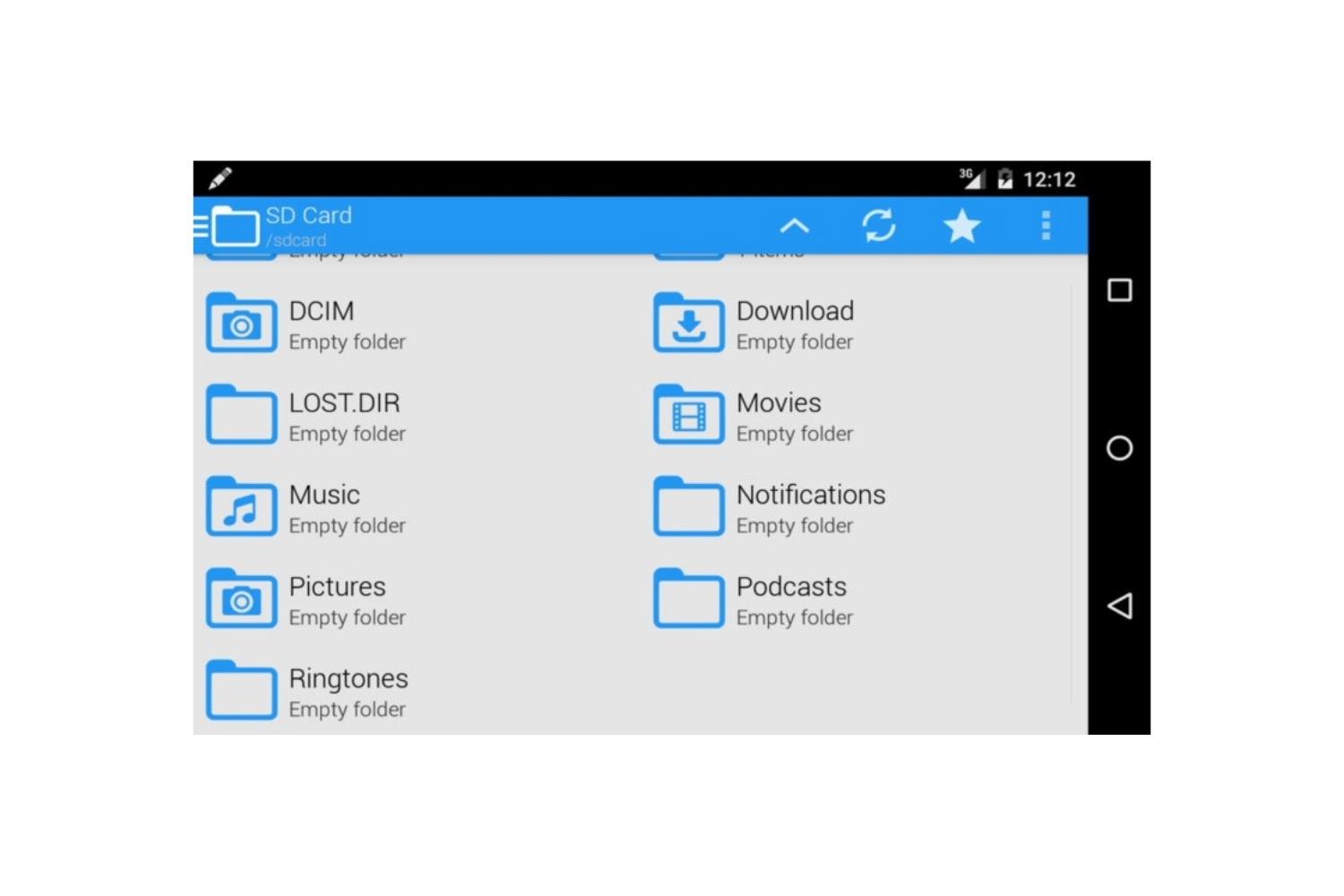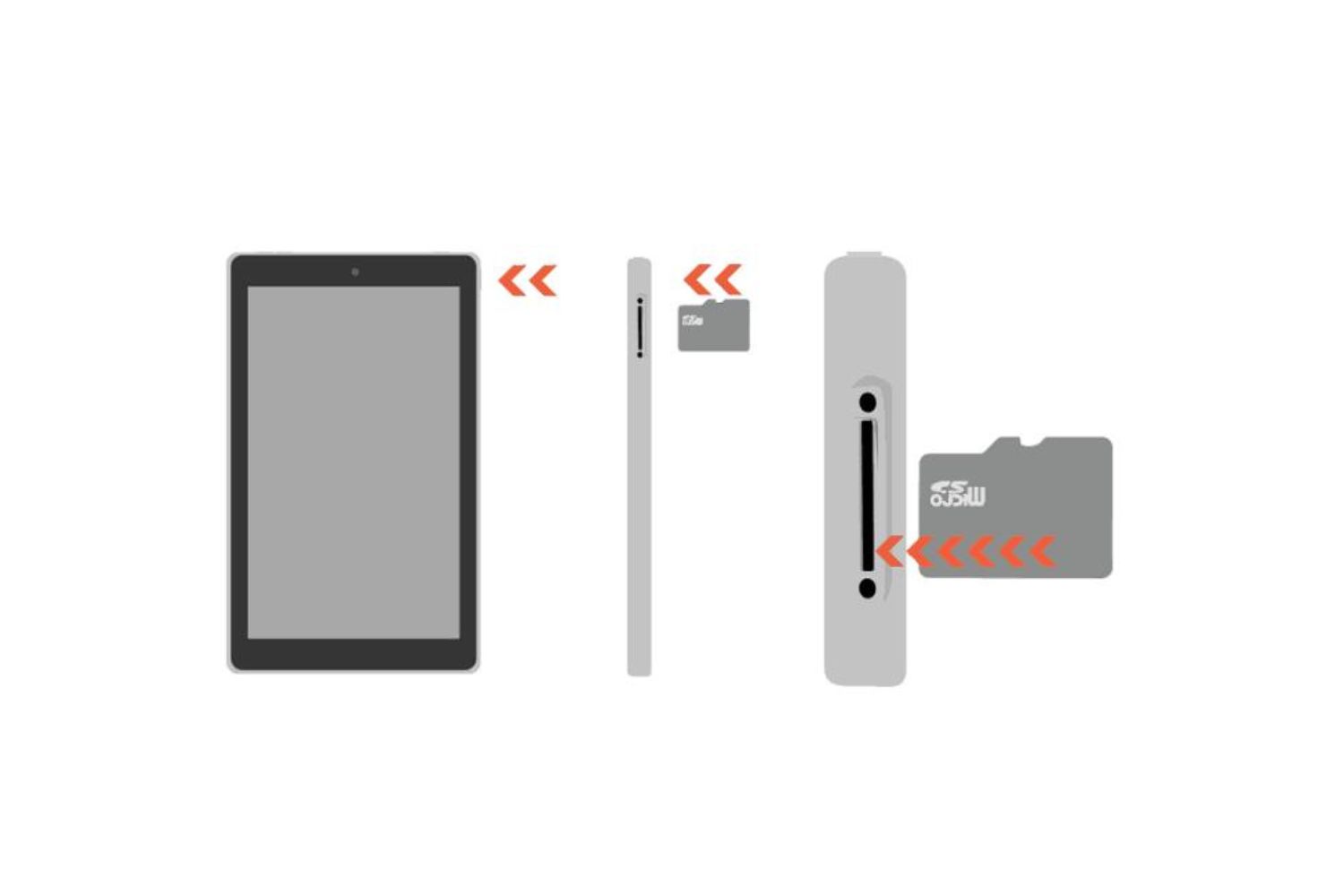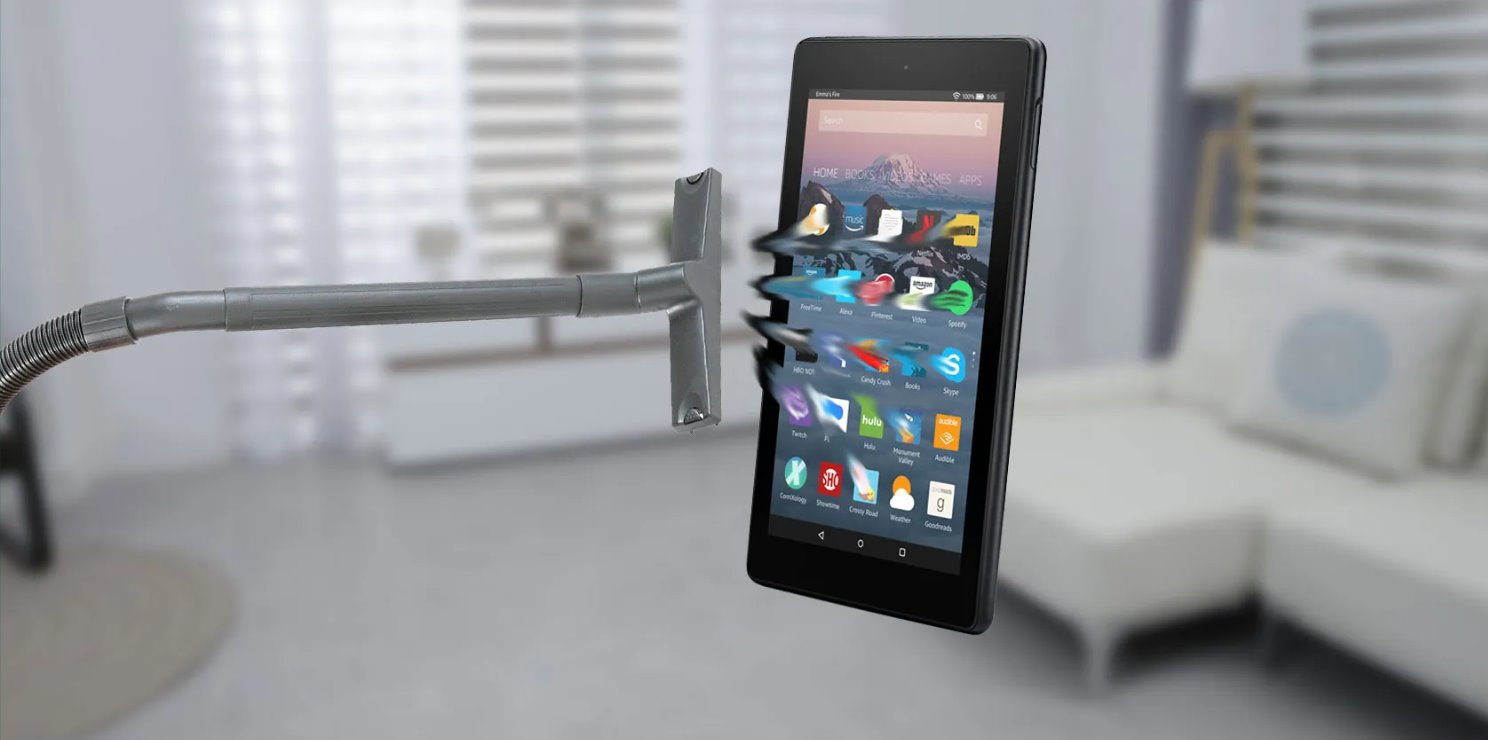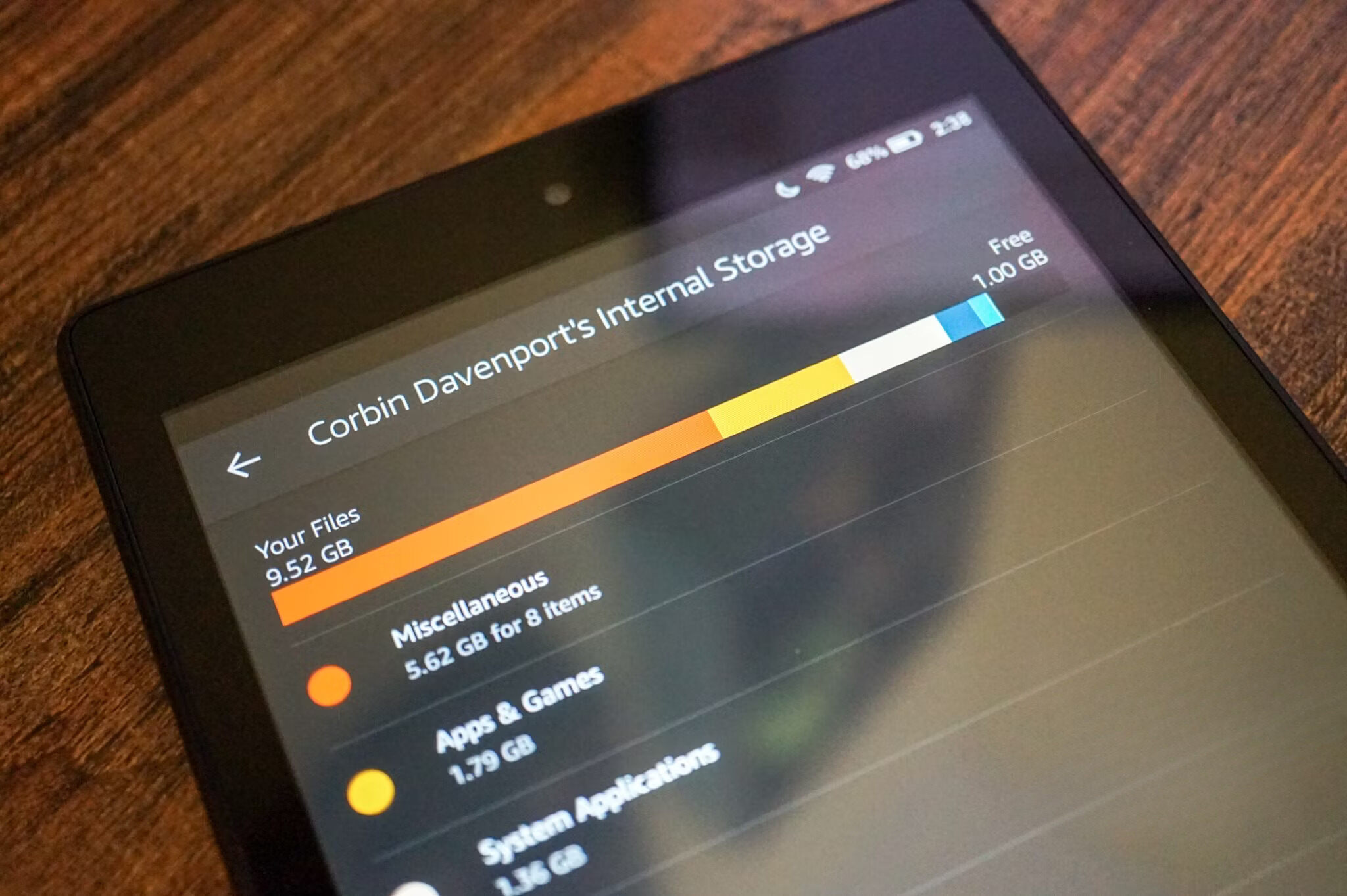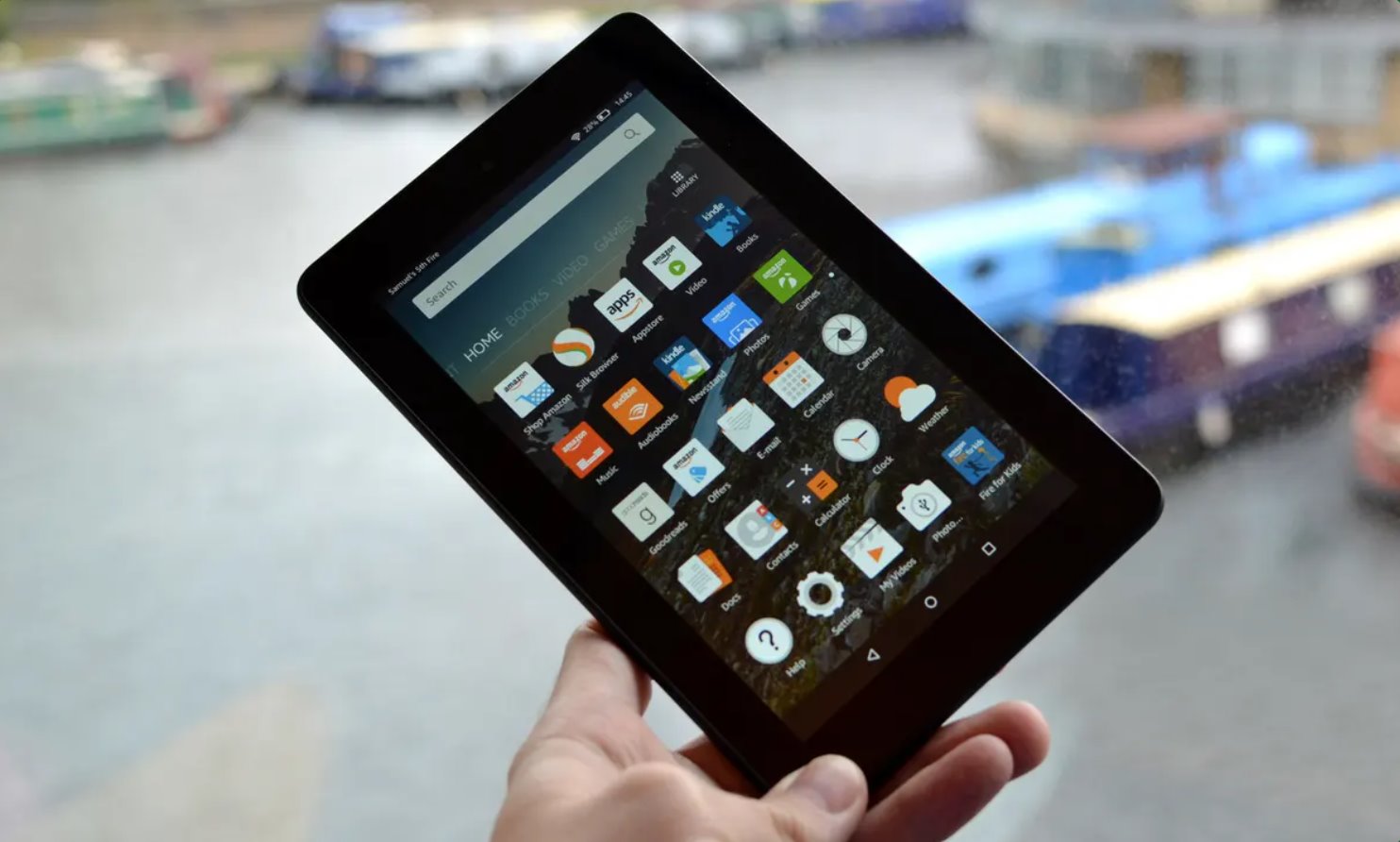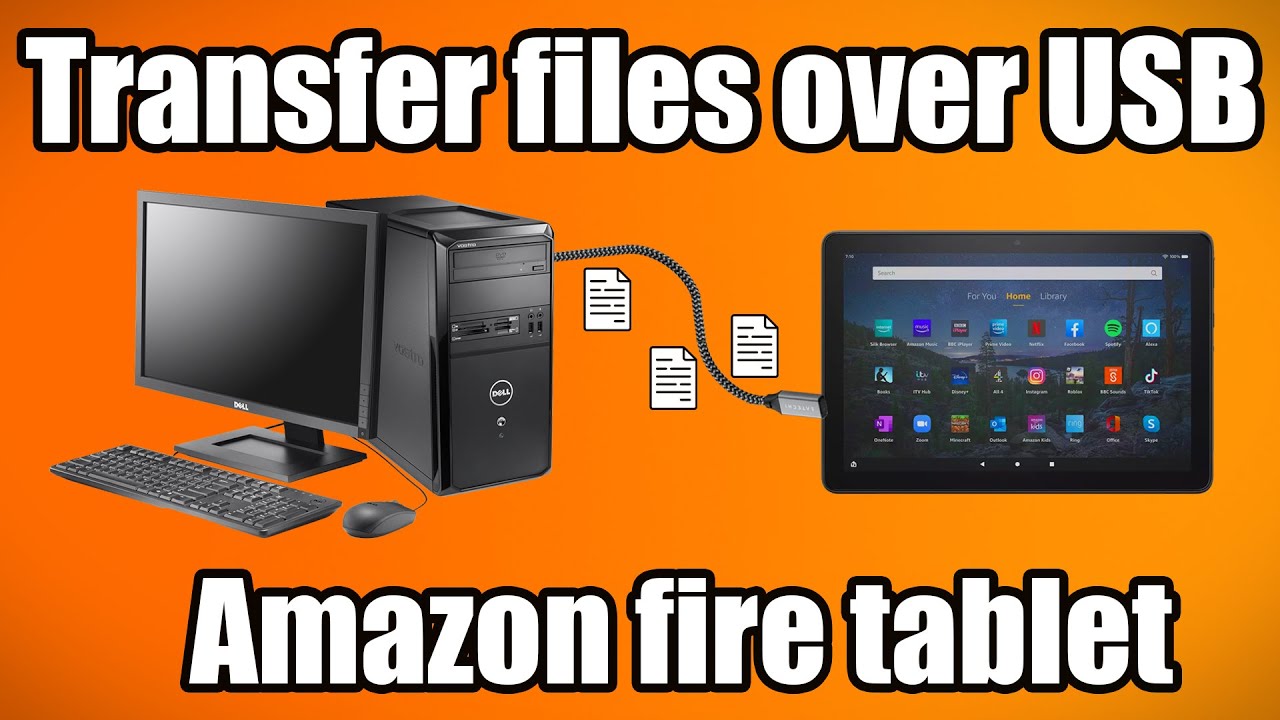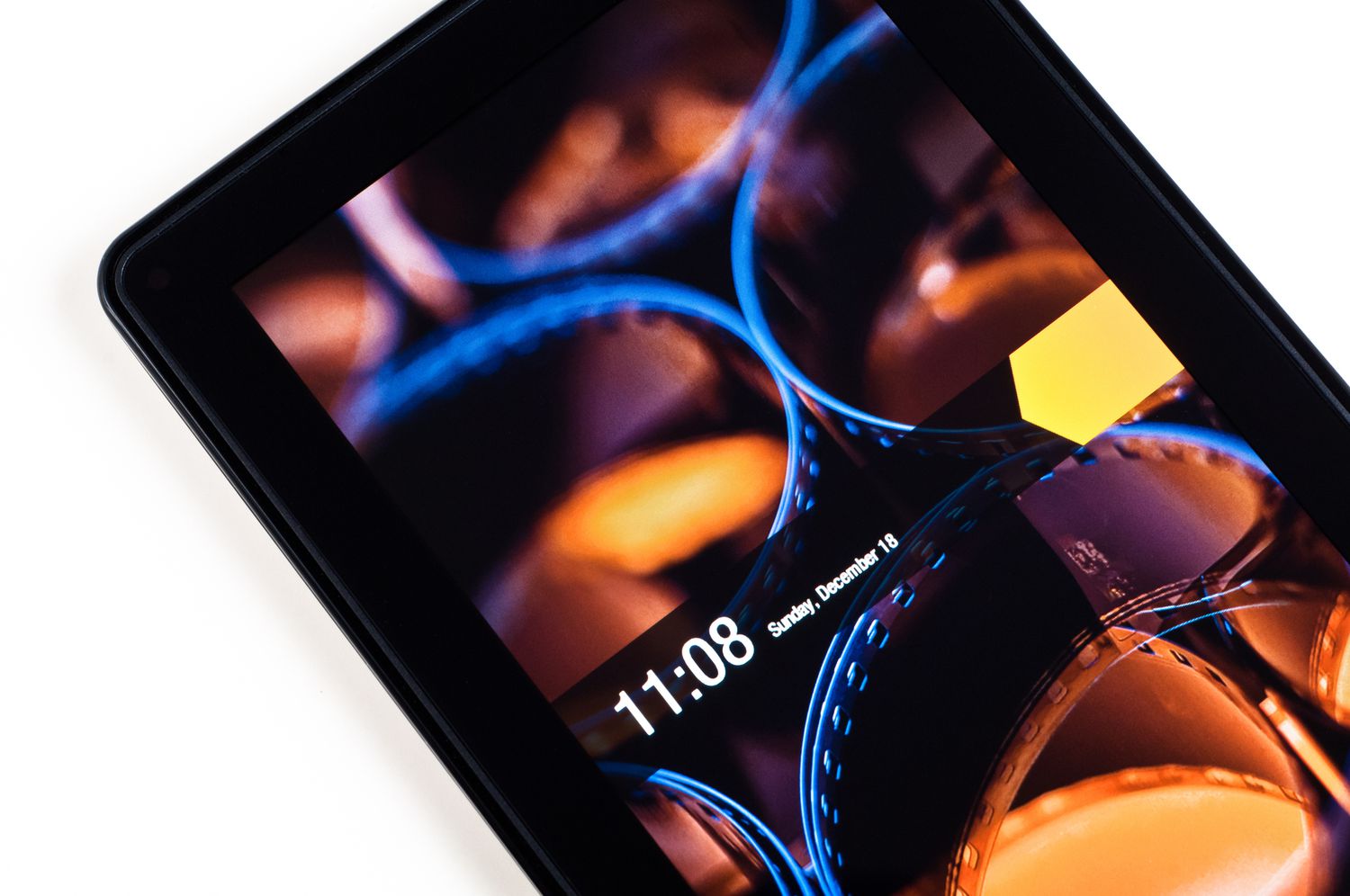Introduction
Welcome to our guide on how to access files on your Amazon Fire tablet! Your Fire tablet is not just a device for streaming movies and playing games; it also allows you to store and manage your personal files, such as photos, documents, and music. Whether you want to view a PDF document, transfer photos from your computer, or access files stored on cloud services like Dropbox or Google Drive, we’ve got you covered.
Understanding how the file system works on your Fire tablet is the first step to accessing and managing your files. We’ll explore the different folders and directories where your files are stored and explain how to navigate them. Additionally, we’ll show you how to use the File Explorer app to browse and open files directly on your tablet.
If you need to transfer files from your computer to your Fire tablet, we’ll walk you through the process. We’ll cover both Windows and Mac computers, so no matter what operating system you’re using, you’ll be able to effortlessly transfer files and enjoy them on your tablet.
In addition, we’ll discuss how to access and sync files stored on popular cloud services, such as Dropbox, Google Drive, and OneDrive. This way, you can easily access your files from anywhere, as long as you have an internet connection.
Managing and organizing your files on your Fire tablet is crucial to keep them organized and easily accessible. We’ll provide tips and tricks on how to create folders, rename files, delete unwanted files, and perform other file management tasks directly on your tablet.
Lastly, we’ll address common file access issues and provide troubleshooting steps to resolve them. From connectivity problems to file format compatibility, we’ll guide you through the process of resolving any issues that may arise while trying to access your files on your Fire tablet.
So, whether you’re a new Fire tablet owner or have been using your device for a while, this guide will equip you with the knowledge and techniques to efficiently access, transfer, and manage your files. Let’s get started!
Understanding the File System on Amazon Fire Tablet
To effectively access and manage your files on your Amazon Fire tablet, it’s important to familiarize yourself with the file system. The Fire tablet’s file system is based on Android, which uses a hierarchical structure to organize files and folders.
At the root of the file system, you will find several main folders, such as “Internal storage” and “SD card” (if your device has expandable storage). The “Internal storage” folder is where the majority of your files, including system files and user data, are stored. The “SD card” folder is where files stored on your device’s SD card can be found.
Inside the “Internal storage” folder, you will find various subdirectories that categorize different types of files. Some of the commonly found folders include:
- DCIM – This folder stores photos and videos captured with the device’s camera.
- Documents – Here you can find documents, such as PDFs, Word documents, and Excel spreadsheets.
- Downloads – Any files you download from a web browser or other apps will be saved in this folder.
- Music – This folder is where you can store music files, such as MP3s.
- Pictures – Similar to the DCIM folder, this folder is used for storing pictures and images.
- Videos – Videos that are not captured with the device’s camera can be stored in this folder.
In addition to these standard folders, you may also find app-specific folders for storing files related to certain apps you have installed. These folders are usually named after the respective apps.
To access your files, simply open the File Explorer app on your Fire tablet. The app will display the folders and files in a user-friendly interface, allowing you to navigate through the file system and open the files you need.
It’s worth noting that the file system on your Fire tablet may vary slightly depending on the model and operating system version. However, the basic structure and organization of files remain consistent.
Now that you have a better understanding of the file system on your Amazon Fire tablet, you’re ready to delve into accessing and managing your files. In the next sections, we will explore various methods to access files, transfer files from your computer, and organize your files on your Fire tablet.
Accessing Files Using the File Explorer App
The File Explorer app is an essential tool for accessing and managing files on your Amazon Fire tablet. It provides a user-friendly interface that allows you to navigate through the file system and open files with ease.
To access the File Explorer app, locate and tap the “Apps” tab on your Fire tablet’s home screen. Then, scroll through the list of apps until you find “File Explorer” and tap on it to open the app.
Once inside the File Explorer app, you will see a familiar folder structure that mirrors the file system on your tablet. You can navigate through the folders by tapping on them to open and view their contents.
To open a file, simply locate the file you want to access and tap on it. The File Explorer app supports various file types, including images, videos, documents, and audio files. When you tap on a file, the appropriate app or built-in viewer will launch, allowing you to view or interact with the file.
If you’re not sure which app to use to open a particular file, you can long-press on the file to bring up a context menu. From there, you can select the “Open with” option to choose the app you want to use to open the file.
In addition to opening files, the File Explorer app also allows you to perform various file management tasks, such as creating new folders, copying and moving files, renaming files, and deleting unwanted files.
To create a new folder, navigate to the directory where you want to create the folder, then tap on the “New” button located at the bottom of the screen. Select “Folder” from the options, and enter a name for the new folder. Once created, you can move files into the new folder by long-pressing on a file, selecting “Cut” or “Copy,” navigating to the new folder, and tapping the “Paste” button.
If you want to rename a file, long-press on the file, select “Rename” from the context menu, and enter the new name. To delete a file, long-press on the file, select “Delete,” and confirm the action.
The File Explorer app also provides options to sort files by name, size, or date, making it easier to find and organize your files. Simply tap on the “Sort” button at the top right corner of the screen and select your preferred sorting option.
With the File Explorer app, accessing and managing files on your Amazon Fire tablet is a breeze. Take some time to explore its features and make the most of your file management capabilities.
Transferring Files from a Computer to Your Fire Tablet
If you have files on your computer that you want to transfer to your Amazon Fire tablet, there are a few different methods you can use to accomplish this. Whether you’re on a Windows or Mac computer, it’s easy to transfer files and enjoy them on your Fire tablet.
One of the simplest ways to transfer files is by using a USB cable. Here’s how:
- Connect your Fire tablet to your computer using a USB cable.
- On your Fire tablet, swipe down from the top of the screen to open the notification panel, and then tap on the “USB” option.
- Select the “Transfer files” option.
- On your computer, open the file explorer and navigate to the folder where the files you want to transfer are located.
- Select the files you want to transfer and copy them (Ctrl+C or Command+C).
- Navigate to the “Internal storage” folder or the “SD card” folder (if applicable) on your Fire tablet in the file explorer.
- Paste the copied files into the desired location on your Fire tablet (Ctrl+V or Command+V).
- Once the transfer is complete, safely disconnect your Fire tablet from your computer.
Another method to transfer files is by using cloud storage services. If you have files stored on services like Dropbox, Google Drive, or OneDrive, you can easily access and download them on your Fire tablet. Simply install the respective app for the cloud service you’re using, sign in to your account, and download the files to your device for offline access.
If you prefer a wireless transfer method, you can use apps like Send Anywhere or AirDroid. These apps allow you to transfer files between your computer and Fire tablet over a Wi-Fi connection. Simply install the app on both devices, follow the instructions to establish a connection, and then transfer files wirelessly between the devices.
Regardless of the method you choose, it’s important to ensure that the files you are transferring are compatible with your Fire tablet. Common file formats, such as JPEG for images and MP3 for music, are typically supported. However, certain file types, such as DRM-protected files or files in unsupported formats, may not be accessible on your tablet.
Transferring files from your computer to your Amazon Fire tablet is a straightforward process. Choose the method that works best for you and enjoy your files on the go!
Accessing Files Stored on Cloud Services
If you have files stored on cloud services like Dropbox, Google Drive, or OneDrive, you can easily access and manage them on your Amazon Fire tablet. This allows you to have your files available at your fingertips, regardless of where you are. Here’s how to access files stored on cloud services:
First, you’ll need to install the respective app for the cloud service on your Fire tablet. You can find these apps in the Amazon Appstore by searching for the name of the cloud service. Once installed, open the app and sign in to your cloud storage account.
After signing in, you will be able to browse through your files and folders. The app will display a user-friendly interface that allows you to navigate through your cloud storage and access your files. You can view documents, listen to music, watch videos, and browse through images stored on your cloud services, all within the app.
If you want to download files for offline access, most cloud storage apps allow you to mark files as available offline. This means that the files will be downloaded to your Fire tablet and can be accessed even when you don’t have an internet connection.
If you want to save storage space on your Fire tablet, you can choose to selectively download files as needed. Simply tap on the file and select the option to download it to your device. This way, you can keep your cloud storage clutter-free while still being able to access specific files when necessary.
In addition to accessing files stored on cloud services through their respective apps, you can also integrate your cloud storage accounts with other compatible apps on your Fire tablet. For example, you can save documents directly to your Dropbox account from a word processing app or upload photos to your Google Drive directly from your gallery app.
Integration with cloud services allows for seamless file management and makes it easier to work with your files across different apps on your Fire tablet.
Overall, accessing files stored on cloud services is a convenient way to have your files accessible on your Amazon Fire tablet. Install the cloud storage apps you use, sign in to your accounts, and enjoy easy access to your files wherever you go.
Managing and Organizing Files on Your Fire Tablet
Properly managing and organizing your files on your Amazon Fire tablet can save you time and make it easier to find and access the files you need. Whether you want to create folders, rename files, delete unwanted files, or perform other file management tasks, the Fire tablet offers several options to help keep your files organized.
To create a new folder, open the File Explorer app on your Fire tablet and navigate to the directory where you want to create the folder. Tap on the “New” button located at the bottom of the screen and select “Folder” from the options. Enter a name for the new folder and tap “OK.” You can then move files into the new folder by long-pressing on a file, selecting “Cut” or “Copy,” navigating to the new folder, and tapping the “Paste” button.
Renaming files is also a straightforward process. In the File Explorer app, long-press on the file you want to rename. Select “Rename” from the context menu that appears, and then enter the new name for the file. Tap “OK” to save the changes.
Deleting unwanted files is as easy as long-pressing on the file you want to delete, selecting “Delete” from the context menu, and confirming the action. Be cautious when deleting files, as they cannot be recovered once deleted from your Fire tablet’s storage.
Sorting files can make it easier to find and organize your files. In the File Explorer app, tap on the “Sort” button at the top right corner of the screen. Select your preferred sorting option, such as by name, size, or date. The files will be rearranged based on your chosen sort order.
If you have a large number of files, you can also use the search function in the File Explorer app to quickly find specific files. Simply tap on the magnifying glass icon at the top right corner of the screen, enter the file name or keywords, and the app will display relevant search results based on your input.
Additionally, you can make use of tags or labels to further organize your files. Some apps and file management tools allow you to assign tags or labels to files, making it easier to categorize and filter files based on their content or purpose.
Regularly backing up your files is also important to prevent data loss. You can use cloud storage services, such as Dropbox or Google Drive, to automatically back up your files to the cloud. This ensures that your files are safe and accessible even if something happens to your Fire tablet.
By effectively managing and organizing your files on your Fire tablet, you can keep your device clutter-free and easily find the files you need. Take advantage of the file management features offered by the Fire tablet and establish a system that works best for you.
Troubleshooting Common File Access Issues
While accessing and managing files on your Amazon Fire tablet is usually a smooth experience, you may encounter some common issues along the way. Understanding how to troubleshoot these file access problems can help you resolve them quickly and get back to enjoying your files. Here are some common file access issues and their troubleshooting steps:
1. File Not Found or Missing: If you’re trying to access a specific file but it appears to be missing or cannot be found, double-check the file location. Make sure you’re looking in the correct folder or directory. If you transferred the file from a computer, verify that it was successfully transferred. If the file is stored on a cloud service, ensure that you’re connected to the internet and the file is still available in your cloud storage.
2. File Format Incompatibility: If you’re unable to open a file on your Fire tablet, it’s possible that the file format is not compatible with the apps installed on your device. Check if there is an app available in the Amazon Appstore that can open the specific file type. You may need to download and install a third-party app from the Appstore to open certain file formats.
3. Connectivity Issues with Cloud Services: If you’re having trouble accessing files stored on cloud services like Dropbox or Google Drive, check your internet connection. Ensure that you’re connected to a stable Wi-Fi network or have a reliable cellular data connection. If your internet connection is fine, try logging out and logging back into the cloud service app on your Fire tablet to refresh the connection.
4. Insufficient Storage Space: If you’re unable to download or transfer files to your Fire tablet due to insufficient storage space, you’ll need to free up space by deleting unnecessary files or moving them to an external storage device. Uninstalling unused apps can also help free up space.
5. App or System Updates: If you’re experiencing issues accessing files after a recent app or system update, try restarting your Fire tablet. This can help resolve any temporary glitches that might have occurred during the update process. Additionally, check for any available app updates in the Amazon Appstore and install them, as they may contain bug fixes or improvements related to file access.
6. File Encryption or Security: If you’ve encrypted certain files or folders on your Fire tablet for added security, ensure that you’re providing the correct encryption password or key to access them. Without the correct credentials, you won’t be able to view or access the encrypted files.
If none of these troubleshooting steps resolve your file access issues, you may want to reach out to Amazon customer support or consult the support documentation for your specific Fire tablet model. They can provide further assistance and guidance tailored to your situation.
Remember, patience and persistence are essential when troubleshooting file access issues. By following these steps and seeking appropriate support when needed, you’ll be able to overcome any obstacles and continue enjoying seamless file access on your Fire tablet.
Conclusion
Congratulations! You’ve reached the end of our guide on accessing files on your Amazon Fire tablet. By understanding the file system, using the File Explorer app, transferring files from a computer, accessing files stored on cloud services, and managing your files effectively, you now have the knowledge and skills to make the most out of your Fire tablet’s file capabilities.
Throughout this guide, we’ve walked you through the various steps and methods to access, transfer, and organize your files. We’ve covered troubleshooting common file access issues and provided solutions to help you overcome any challenges that may arise.
Remember, proper organization and management of your files can save you time and frustration in the long run. Whether it’s creating folders, renaming files, or deleting unwanted files, taking the time to keep your files organized will pay off when you need to find a specific document, photo, or video quickly.
Additionally, don’t forget to make use of cloud storage services to back up your files and ensure their accessibility from any device with an internet connection. This can provide you with peace of mind knowing that your files are safe and secure, even if something were to happen to your Fire tablet.
We hope this guide has been helpful and has empowered you to make the most out of your Amazon Fire tablet’s file capabilities. Whether you’re a casual user or a productivity enthusiast, these skills will allow you to fully utilize your device and enjoy a seamless file access experience.
So go ahead, explore, create, and manage your files with confidence on your Amazon Fire tablet. Embrace the versatility of your device and unlock the full potential of your digital world!







